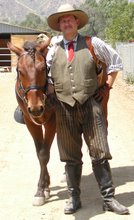
Lately I've been getting interested in WWI so I pulled out another game this last weekend: 1918: Storm in the West. This was originally published in Command No. 16 in 1992 and it's one of Ted Racier's earlier designs. You can definately see the similarities between this one and "When Eagles Fight", which came out later. This is a medium complexity game and the victory conditions are based on each side driving down the enemie's morale to zero before the enemy does it to them. Each side starts with an equal number of morale points and morale points are gained and lost by the occupation of various cities and forts. Paris with three hexes of five points each is an especially inviting target.
Like Ludendorff in 1918, the Geman player is faced with many strategic choices and not enought troops to adequately do them all. It is strongly recommended that the German focus his efforts on one sector rather than spreading them around like Ludendorff did historically. The basic choices are: in the North against the British in an effort to drive to the Channel ports and isolate the BEF or in the South against the French, aimed at Paris (there really isn't an alternative in the South due to the lack of city hexes with enough morale points to make it worthwhile).
The Germans are especially under the gun because have only 9 games turns to accomplish their goal. On Game Turn 9, there is a victory check and if they messed up bad enough, they automatically lose. Otherwise, the game continues but all the Strosstruppen Corps lose their abilities and the counters are replaced. Then the Germans are on the defensive as the Allies (the Americans in particular) build up strength.
The game mechanics are pretty standard and rules are included for the effects of Strosstruppen by way of infiltration rules which allow units to work their way through enemy Zones of Control. The Allies do not get this ability until mid-way through the game and they have to be employed in conjunction with tank units. Also, the CRT is VERY bloody and as the game progresses, the replacement rates begin to dwindle for both sides and like history, it's a battle to see who collapses first from exahustion. There's also enough "chrome" to keep it interesting with "Big Bertha" guns and the Bruchmuller artillery group to give German attacks a big boost.
In my game, I decided to have the Germans make a drive on Paris and due to some bad unit placement and lucky die-rolls, the Germans were able to advance into one hex of Paris during the infiltration movement phase and the Allies were unable to bring in reinforcements to the other two Paris hexes in time. Unlike history, the Allies collapsed in May 1918 and the Americans were little more than speed bumps.
Overall, this is a pretty tense well designed game and the play balance is excellent. There's also a 1919 scenario that was published in a later copy of Command but I forget which one (I have the counters but not the rules). This one should definately be re-published.
Like Ludendorff in 1918, the Geman player is faced with many strategic choices and not enought troops to adequately do them all. It is strongly recommended that the German focus his efforts on one sector rather than spreading them around like Ludendorff did historically. The basic choices are: in the North against the British in an effort to drive to the Channel ports and isolate the BEF or in the South against the French, aimed at Paris (there really isn't an alternative in the South due to the lack of city hexes with enough morale points to make it worthwhile).
The Germans are especially under the gun because have only 9 games turns to accomplish their goal. On Game Turn 9, there is a victory check and if they messed up bad enough, they automatically lose. Otherwise, the game continues but all the Strosstruppen Corps lose their abilities and the counters are replaced. Then the Germans are on the defensive as the Allies (the Americans in particular) build up strength.
The game mechanics are pretty standard and rules are included for the effects of Strosstruppen by way of infiltration rules which allow units to work their way through enemy Zones of Control. The Allies do not get this ability until mid-way through the game and they have to be employed in conjunction with tank units. Also, the CRT is VERY bloody and as the game progresses, the replacement rates begin to dwindle for both sides and like history, it's a battle to see who collapses first from exahustion. There's also enough "chrome" to keep it interesting with "Big Bertha" guns and the Bruchmuller artillery group to give German attacks a big boost.
In my game, I decided to have the Germans make a drive on Paris and due to some bad unit placement and lucky die-rolls, the Germans were able to advance into one hex of Paris during the infiltration movement phase and the Allies were unable to bring in reinforcements to the other two Paris hexes in time. Unlike history, the Allies collapsed in May 1918 and the Americans were little more than speed bumps.
Overall, this is a pretty tense well designed game and the play balance is excellent. There's also a 1919 scenario that was published in a later copy of Command but I forget which one (I have the counters but not the rules). This one should definately be re-published.










No comments:
Post a Comment